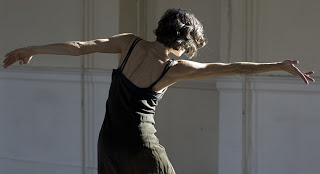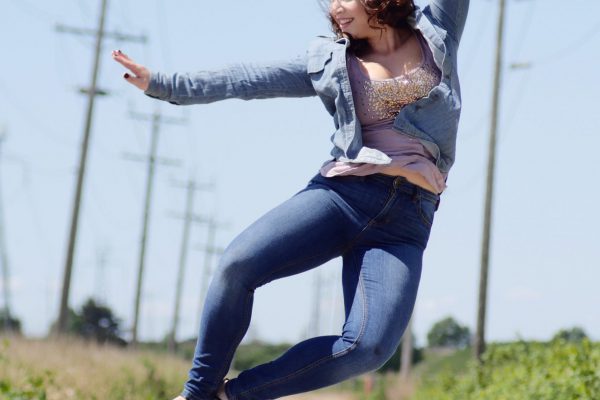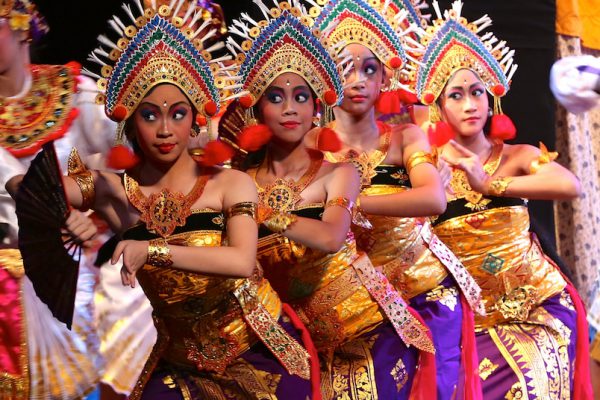In advance of her two-week improvisation workshop (April 29 – May 9), Jennifer Mascall talks about the role of improvisation in her career as both a performer and choreographer. The workshop invited dancers to explore the nature of impulse, uniting anatomical and imaginative expression. In the following conversation with Rachel Maddock, Mascall shares her thoughts on the importance of the form to the Vancouver dance scene, and details about her recent workshop.
~
Rachel Maddock What role has improvisation played in your dance career?
Jennifer Mascall Improvisation was my career from the very beginning. For the first seven years of my professional life, I performed improvisation.
RM What drew you to improvise?
JM Some of it came from the fact that I found it very hard to make up choreography on myself. I couldn’t seem to imagine the viewpoint of me from the outside, or repeat my impulses. I realized that often I wasn’t working from an idea, but rather from a partnership with the sound. In that period I was interested in collaborating with musicians – among them were Henry Kiesinger, John Oswald and a cellist named Ernst Reijseger.
RM What did you take away from that period?
JM It taught me many things. It taught me that if you are alone performing, the warm up requires a self-assessment of who you are on that day. You have to decide how to direct the time up until when you will improvise: some days maybe you need to run for miles, some days you need to do Tai-Chi and some days you need to do writing. You have to do whatever is needed to prepare for that meeting [of performance]. Because I was often in places that I’d never been – for three years I did tours in Scandinavia – I had to develop a way to assess the space and decide how I would be in that space. Each different space requires a different kind of dancing and different movement. And then when I performed with other improvisers, we used to hang out together to get in synch.
RM How have you used improvisation in your dance company?
JM In the beginning they were separate actions: I would perform improvisation and I would choreograph. It was only later that I developed an improvisation method that led to choreography, and I’ve done that three or four times.
Since 1990, the forum that MascallDance has used to research improvisation has been called the Nijinsky Gibber Jazz Club. Over the past fifteen years the company has developed what we call public research, which uses improvisation in public places (festivals, events, people’s houses) and video documentation to make scores. Several of my creations, including WHAT and The Three Cornered Hat, were all developed using this public research method. It was like a double-edged sword for the dancers because when they were dancing in public they were doing research but they were also performing – a real inside/outside experience.
I’ve also done a form of improvisation from choreography that is a little like playwriting. We create a piece with the dancers, then we improvise it. We make it in a specific order, then take it apart. Even though we only use material we created, the spacing, timing, order and organization of who is dancing with who can be totally improvised. I found this quite exciting as a method. The dancers who knew all the material—as a piece with a beginning, middle and end— then had to use their brain to suddenly think about it totally differently. It became about the interactions. It’s like having a conversation with someone on the street that you’ve already had: you’ve already thought the thoughts, but they come out differently and become new thoughts through the different meetings of them.
RM Improvisation is key part of the contemporary dance scene in Vancouver. In your opinion what role has it played and how has it developed?
JM The first time I came to Vancouver was in 1978. I had been studying contact improvisation in New York City for two years when I decided to do a two-week workshop with Fulcrum – a Vancouver company started by Peter Bingham, Andrew Harwood and Helen Clark. Since then and before, contact improvisation has been an active part of Vancouver’s dance community. It certainly is a technique that allows people to feel like they just want to dance, whereas many other techniques actually kill off their participants. Contact improvisation is one that actually develops people. I feel like it has been a very healthy contribution to Vancouver. On the larger scale, contact itself provided modern and then contemporary dance with a duet form, because previous to that it didn’t have one. The form used for partnering in modern dance came from ballet and it wasn’t functioning very well. Contact became that duet form.
RM Why do you think improvisation is an important subject of study for Vancouver dancers?
JM I think in Vancouver it’s an incredibly exciting time in dance. I have noticed that in the city the gap between having a concept or following a philosophy and making a dance has really narrowed. The people working are becoming movement philosophers. There’s lots of really good training happening, so there are many well trained and beautiful performers. I think improvisation is one of the most sophisticated forms because it requires such subtlety and rigorous attention to imagination and the present moment. I feel like it’s a hungry time: dancers are interested in having the range where they can bring their full imagination to their research and have the tools to analyze that.
RM What did the workshop cover?
JM The training that I’m bringing to this particular workshop comes partly from Linda Putnam, who developed her own syllabus from Grotowski movement theatre work and Sufi training. I met her in 1986 and trained with her up until a couple of years ago. Her syllabus is a training of the imagination and it’s quite structured. The reason I was so attracted to it is because it talks about things that are totally about movement, that the dance world should know about but we were never taught. I kept thinking, ‘how does no one ever mention this in the studio when we train?’ It seemed so relevant. In the mid-1990s I trained as a Body Mind Centering practitioner with Bonnie Bainbridge Cohen. And so in the workshop I’m trying to amalgamate experiential anatomy and the training of the imagination in order to make movement scores.
RM Have you done this workshop before?
JM No, I’ve done both experiential anatomy and Grotowski theatre work but not together leading to develop improvised scores.
RM Why now?
JM [laughs] Because I want to work with dancers who have this information. And also I think it’s a pretty exciting partnership of methods. It brings together the psychology of who you are as an artist, what you actually feel and then asks how deep can you go inside to accurately find the place in your body where you’re going to move from. Then when you move, there is an incredible image life that becomes available, from places like your organs or your endocrine glands. Then we ask, how do you actually communicate that image to an audience?
RM Why should dancers attend this kind of intensive? What will they gain?
JM When I studied either the Body-Mind Centering or Linda Putnam’s work, the workshops would often only be two weeks long. In that time period, I got so much rich information I felt like I could work all year to come back to the next time. I don’t think of the dancers in Vancouver as being “workshop junkies.” I feel like they have to be quite selective about their training. But I know that these tools that have so inspired me can inspire other people. They’re very rich and can help in the development of your life as a dance artist.
~
Tagged: Improvisation, On the Ground, BC , Vancouver




